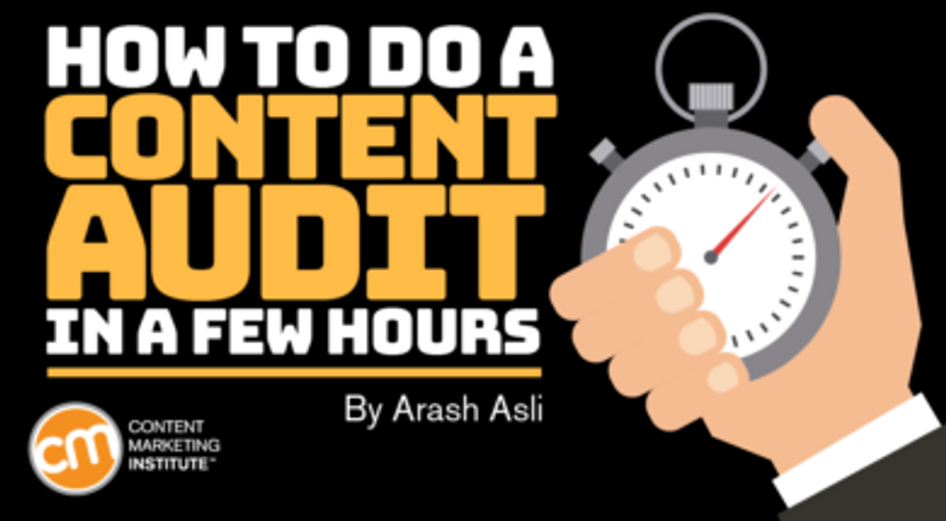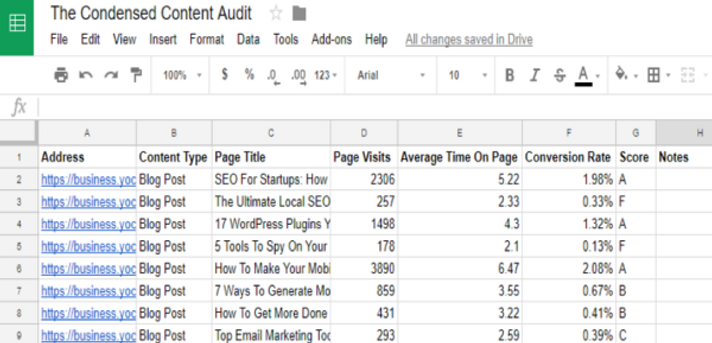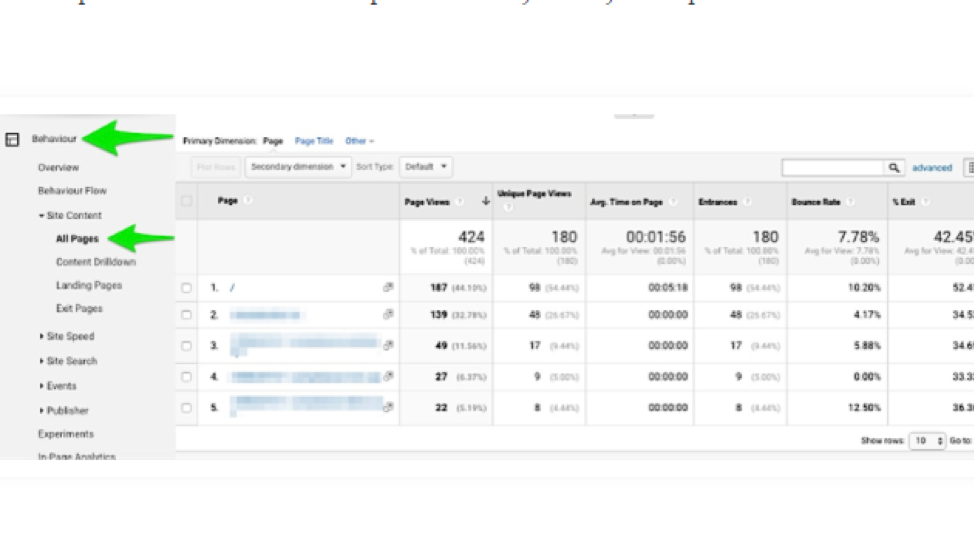How to Do a Content Audit in a Few Hours
- Fahad H

- Feb 15, 2018
- 4 min read

Content audits are about as popular as colonoscopies but they’re just as necessary to health – in this case, the health of your content marketing strategy.
But you likely dread the tedious, time-consuming annual content audit, and reliably and predictably put it off (and sometimes never get it done.)
What if you could do a content audit in only a few hours? Impossible, you say.
Consider a condensed content audit. It’s a fresh approach that allows you to more regularly provide actionable insights into what type of content is performing best to inform your upcoming activities.
HANDPICKED RELATED CONTENT: The Best 9 Analytics to Help with Content Audits
Condensed content audit explained
Condensed content audits are not meant to replace the comprehensive content audits you should do every year.
The condensed content audit is a shortened form of the traditional content audit. It forces you to narrow your most important goals and determine whether they are being achieved – and how to improve what you’re doing.
Condensed content audits are designed to be done more frequently, preferably monthly or as often as you have the time.Condensed #content audits are designed to be done monthly or as often as you have the time, says @arash31. Click To Tweet
Monthly condensed content audits allow you to:
Continually improve your content marketing strategy because you’re always seeing what’s working and what’s not
Identify problems and proactively address them before they affect the content’s performance long-term
Make them routine in your process, which likely will make yearly content audits easier
With this in mind, here is how to do a content audit in three steps and in just a few hours – maybe even less.
Before I delve further, let’s get one thing out of the way – the condensed content audit is flexible. The point is to set in motion the opportunity to evaluate your content more regularly.
Now, let’s begin.
1. Choose three metrics to measure
Narrow your attention to the most important metrics that connect to your goals at the time. By looking only at a handful of metrics at a given time, you can draw insights more easily.
Perhaps you want to measure conversion data. Maybe you want to measure traffic. Maybe you want to measure engagement (such as time spent on site or social shares). You could even assess aspects of your SEO strategy.
TIP: When regularly conducting condensed content audits, you can pick the same metrics each time or pick new ones depending on your goals at the time.
HANDPICKED RELATED CONTENT: How to Audit Your Content: 5 Essential Steps
2. Take inventory of your content
Create a spreadsheet just as you might for a traditional content audit. Label each column with the data point, including:
URL
Content type
Page title
Metric one
Metric two
Metric three
Score or grade
Notes

Screaming Frog can do the inventory legwork by automatically crawling your website to collect URLs (along with title tags and title tag length, which you may or may not need).
If your site is large, select 30 or 40 URLs, as that’s typically enough to draw trends. Pick the URLs connected to a category you’re most interested in learning about. For example, perhaps you want to start with your oldest content.Condensed content audit: Pick 3 metrics and 30 URLs to analyze. Make it manageable, says @arash31. Click To Tweet
With the content identified, you can consult whatever analytics tools you need to gather the necessary data and add it to the condensed audit spreadsheet. As always, Google Analytics can provide data on page visits, bounce rate, and many other metrics.
TIP: In Google Analytics, export your data by clicking Export then CSV under the report title so the data can easily marry onto your condensed audit spreadsheet.

HANDPICKED RELATED CONTENT:
3. Assess the data and make notes for action
The next step is to assess your data – to look for trends. For example, do you notice that people tend to spend the most time on your pages with a certain subject? Can you see what content receives the most search traffic?
At this point, document your evaluation. For example, create a grading system for your content from A (top-performing) to F (poorly performing). Use the score column on the spreadsheet to track each grade.
How you pick the letter grade will be based on your choice of metrics.
In some cases, it may be based on objective data. For example, this content performed poorly across all three metrics and therefore receives an F rating. Or this content performed adequately in two of three categories so it receives a C. In other cases, your choice of letter may be subjective.
TIP: As best as possible, detail in a couple sentences what each grade means before you begin the evaluation. That’s also helpful if multiple people are involved in the audit review. Then, use the notes column to detail possible action steps. After all, that’s the point of the content audit in the first place.In condensed #content audit, use notes column to document actionable next steps, says @arash31. Click To Tweet
For example, perhaps underperforming content leads you to conclude that some content should be updated to reflect more current information or to improve its quality. Perhaps your top-performing content should be promoted more or included as links in more related content.
With the condensed audit complete, you have a road map with a few actionable steps that you can implement to improve your content marketing.
In other words, keep it manageable.
Takeaway
The condensed content audit looks much like a typical content audit, but the pared version is designed to improve the results of your content marketing strategy more frequently. It’s flexible to your needs. Think of it as a framework instead of something set in stone.
Lastly, what’s great about the condensed content audit is that it gets you and your team in the habit of doing audits more often so when it’s time to do your annual audit, it will be like second nature.
Gain valuable insight into creating more effective content strategy processes and much more at Intelligent Content Conference March 20-22 in Las Vegas. Use code BLOG100 to save $100 and register today.
Cover image by Joseph Kalinowski/Content Marketing Institute
Please note: All tools included in our blog posts are suggested by authors, not the CMI editorial team. No one post can provide all relevant tools in the space. Feel free to include additional tools in the comments (from your company or ones that you have used).








Comments